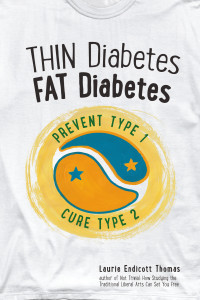Amyotrophic Lateral Sclerosis (ALS or Lou Gehrig’s disease) strikes healthy, middle-aged people seemingly at random. It is a brutal neurodegenerative disease. ALS paralyzes people while leaving their mental capacities intact. Most patients die within three years when they can no longer breathe or swallow. At any given time, an estimated 30,000 people suffer from ALS in the US – an incident rate close to that of Multiple Sclerosis. Of all major neurodegenerative diseases, ALS has the least chance of survival. So any discovery linking environmental factors to ALS is extremely worthy of investigation.
There is some exciting research that shows that the combined phenomenon of bioaccumulation and biomagnification in fish and other animals may someday be shown to be at least one cause of ALS.
Bioaccumulation is the progressive increase in the amount of a substance in an organism or part of an organism which occurs because the rate of intake exceeds the organism’s ability to remove the substance from the body.[i]
Biomagnification is the process whereby the tissue concentrations of a contaminant increase as it passes up the food chain through two or more trophic levels.[ii]
Bioaccumulation and biomagnification result in high levels of contaminants in some larger fish that prompt public health warnings on the dangers of consuming certain fish. For at least a decade, the Environmental Protection Agency has warned pregnant women to avoid seafood known to be high in mercury (ie. swordfish, king mackerel, tilefish and shark).
You’ll also see local advisories for various waterways known to contain fish high in certain contaminates. For example, to protect people from dioxin exposure, the EPA recommends that adults limit their consumption of San Francisco Bay fish to no more than two meals per month.[iii]
In the case of ALS, bioaccumulation of a neurotoxin called Beta Methylamino – L alanine or BMMA may eventually be shown to be a causative agent.[iv] This discovery came about after scientists found that the rate of ALS among indigenous peoples on the island of Guam was 100 times that found in the rest of the world. 50 years ago, in some villages in Guam, 1 in 3 adults died of the disease.
A recent video by Dr. Michael Gregor explains in detail the latest research that shows a strong association between BMMA and ALS.[v] On autopsy, Guam residents that died of ALS had high levels of BMMA in their brains whereas no BMMA was found in control brains of healthy people that died.
As Dr. Greger explains, the exposure to high levels of BMMA in Guam came from a diet that included fruit bats known as flying foxes. The flying foxes bioaccumulated BMMA from contaminated cycad tree seeds. The seeds themselves became contaminated with BMMA from blue-green algae.
It turns out that nearly all blue-green algae all over the world produce BMMA – including blue-green algae in the Atlantic Southeast. BMMA is found in large amounts in Florida seafood. [vi] Researchers found BMMA in brains of Floridians who died from sporadic Alzheimer’s disease and ALS, but not in the brains of those that died of a different neurodegenerative disease called Huntington’s which is caused by a known genetic mutation. This prompted Dr Greger to state that: “In the US, fish may be the fruit bat”.
Much research needs to be done to discover mechanisms that would demonstrate a cause and effect relationship between BMMA and ALS. It will be interesting to see if science gives us another good reason to avoid fish.
[i] http://toxics.usgs.gov/definitions/bioaccumulation.html
[ii] http://toxics.usgs.gov/definitions/biomagnification.html
[iii] http://www.epa.gov/region9/water/dioxin/sfbay.html
[iv] http://www.ncbi.nlm.nih.gov/pmc/articles/PMC3295368/
[v] http://nutritionfacts.org/video/als-lou-gehrigs-disease-fishing-for-answers/
[vi] http://www.ncbi.nlm.nih.gov/pubmed/21057660






 E Excerpt from Laurie Endicott Thomas’s amazing book Thin Diabetes – Fat Diabetes by clicking here!
E Excerpt from Laurie Endicott Thomas’s amazing book Thin Diabetes – Fat Diabetes by clicking here!
Speak Your Mind